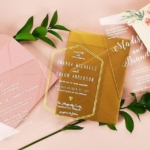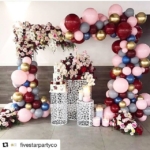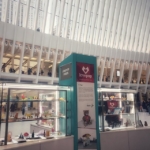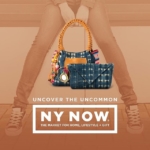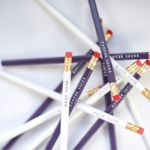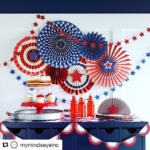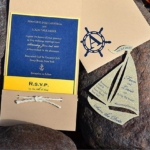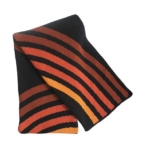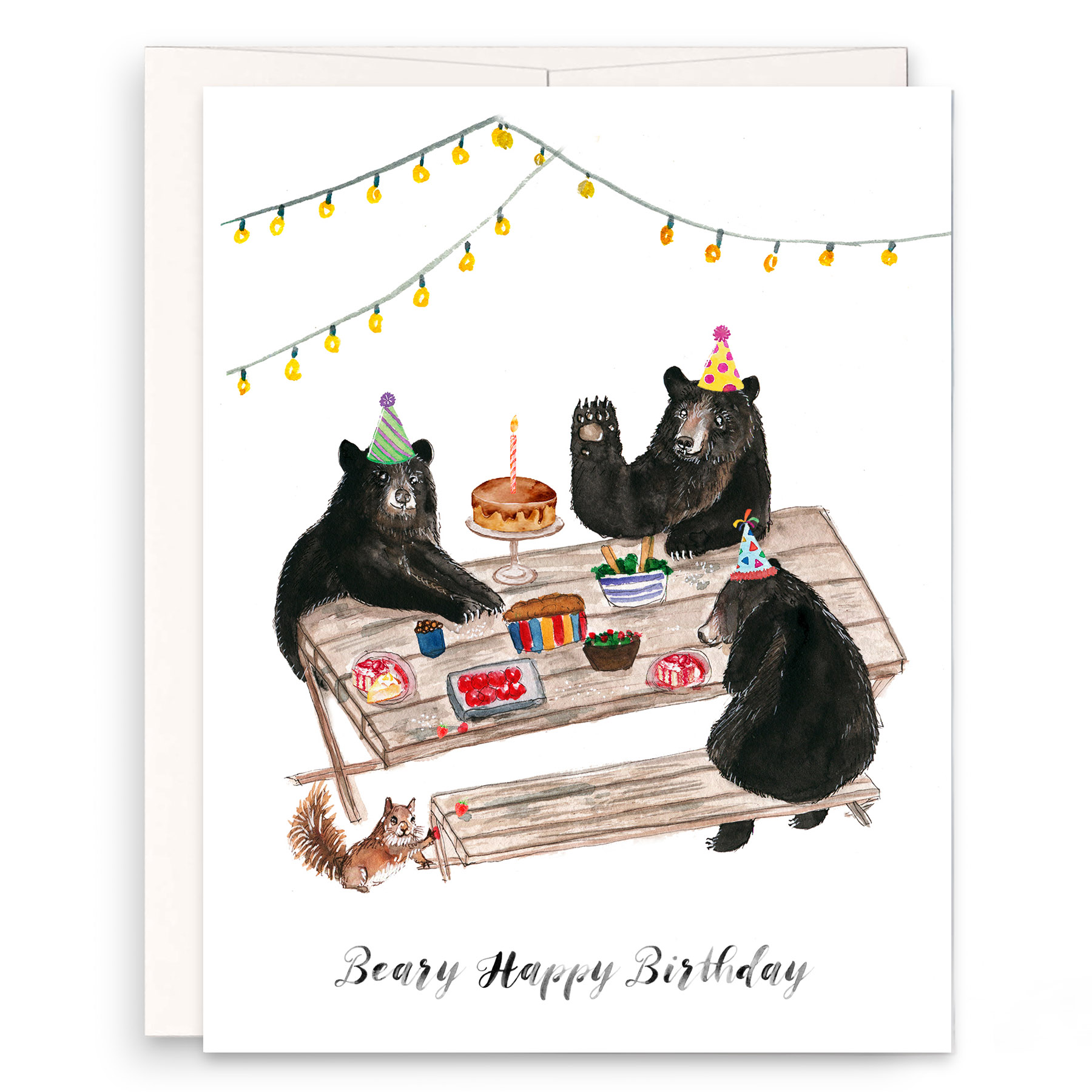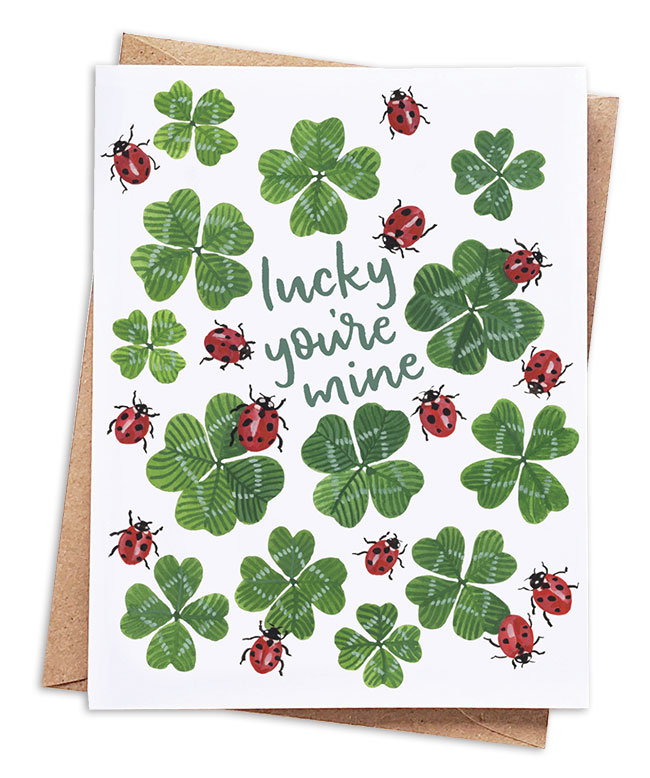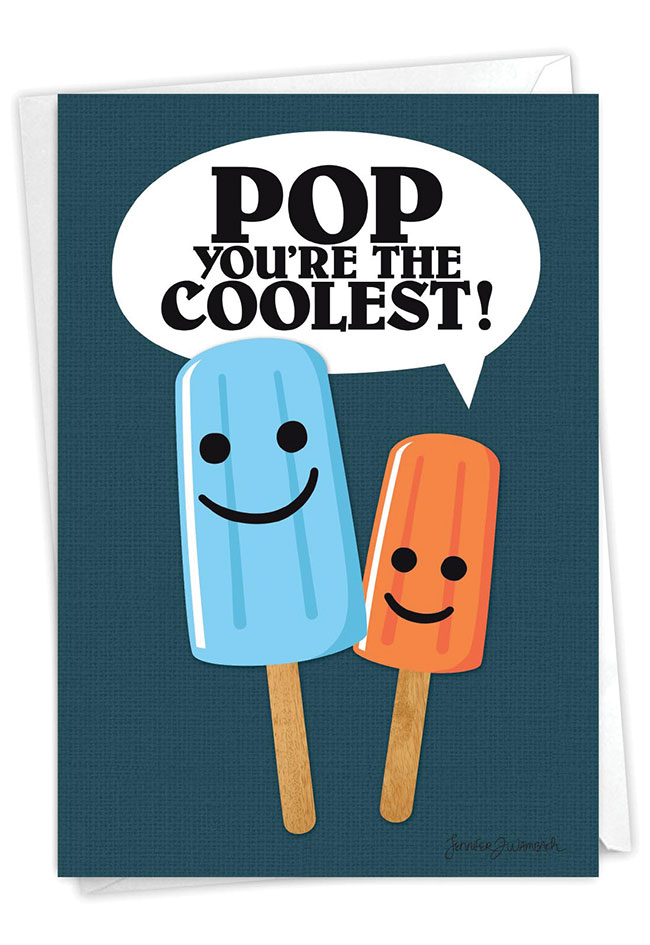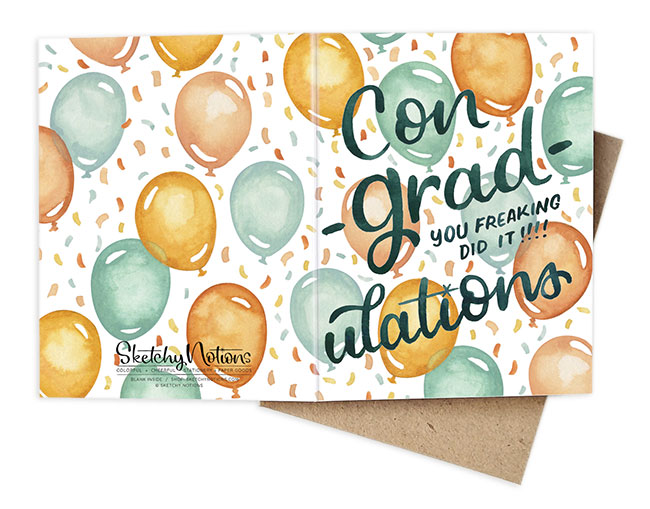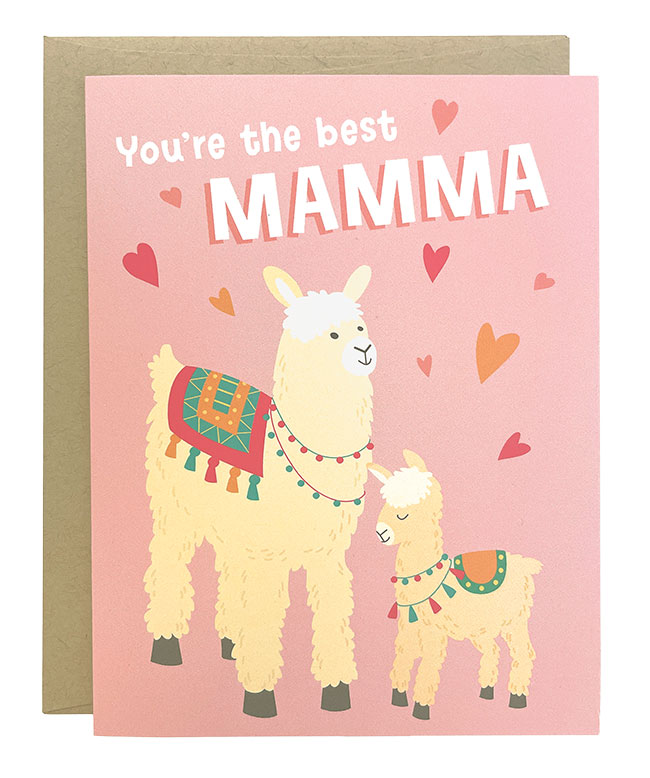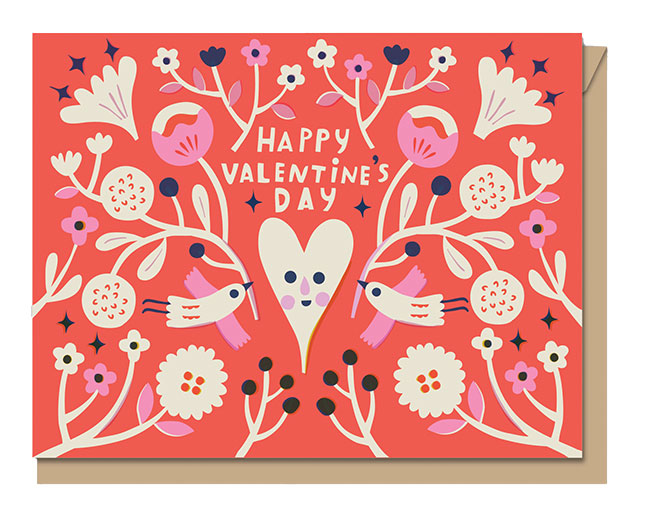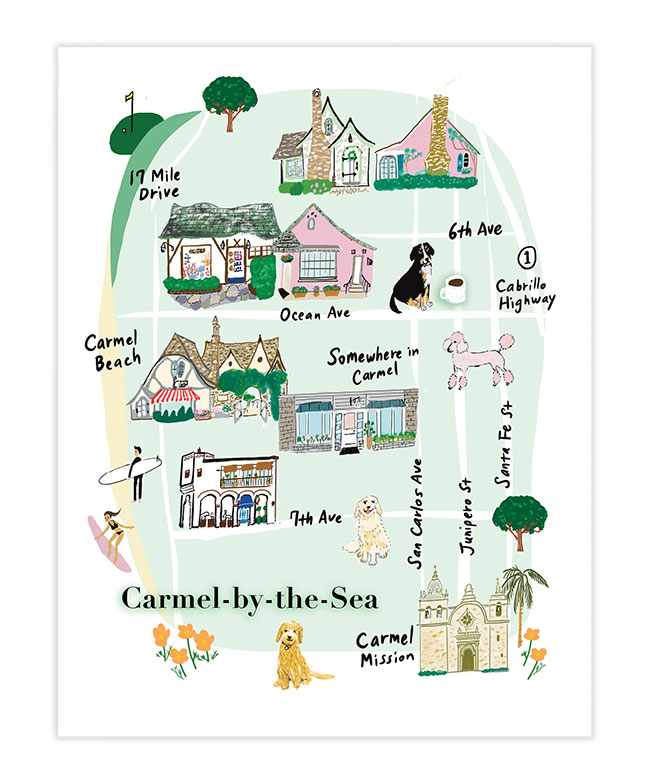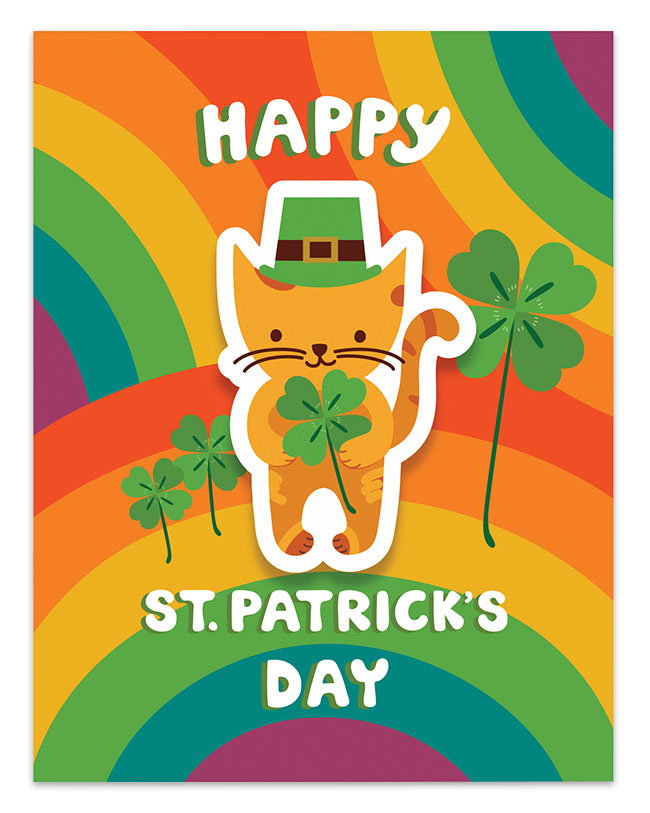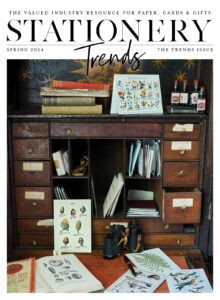Features Industry Profiles
May 9, 2013 •
Cat Seto
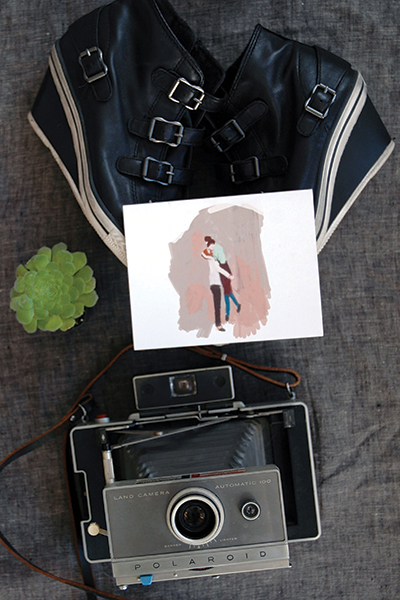
Cat Seto is a force of nature. Like so many in this industry, the designer’s role also encompasses illustrator, author, mother and even retailer. But her path has been a circuitous one. After receiving her BFA and MFA in Creative Writing from the University of Michigan, she moved to San Francisco to write the Great American Novel — but a case of writer’s block found her crafting felt puppets.
They began to populate a stationery line, which in 2005 debuted at National Stationery Show (NSS). Her greeting cards, stationery and wedding invitations have since been in more than 800 retail boutiques, with Anthropologie an early client, and she’s licensed designs to Target, Minted and Tiny Prints. Meanwhile, her Russian Hill studio evolved into a boutique, and her attempts to juggle it all with motherhood evolved into the Chronicle Books title “Mom Inc.”
Seto returns to NSS in 2013 with her brand-new Ferme á Papier line. Translating to “farm to paper,” she described the line as having a French preppy, illustrative vibe. “I felt a real urge to go back to my roots in painting and illustration. I wanted to explore natural themes in contemporary settings … urban couples having a meal together, illustrated vegetable prints and Fauvist-inspired drawings of everyday life.”
Stationery Trends interviewed Seto to learn more about her inspirations and new line.
Wearing Many Hats Well
ST: Did you ever envision doing all you do when you graduated from University of Michigan?
CS: Never… and it’s a good thing. First year of college I was put into a remedial English course, and if you told me I would end up getting a MFA in fiction I would have thought you were crazy! From writer’s block leading to my stationery business, to a difficult pregnancy opening up a community design blog for moms and then the surprise of a book, every obstacle has led to an opportunity and another “hat” to try on for size you could say. I feel humbled by and grateful for all of them.
ST: What did you learn from working with Anthropologie that allowed your brand to prosper?
CS: I illustrated almost everything, right down to the herringbone patterns on an invite to the frame of a monogram in my first collection, because this was more natural to me than a graphical approach. I think the hand-illustrated look resonated with Anthropologie’s aesthetic. I have such great admiration for the buyers and how they’ve maintained such a lasting eclectic sense of style in their collections. They taught me early on to stick to my individuality and strengths and hone what I love and do best.
ST: How did your studio become a boutique?
CS: I grew up in a somewhat crowded house where my parents, siblings, grandmother and family pets all piled into the family room to do homework or relax. (So) a tranquil, glass-walled studio space was not something I desired. When my line started turning a profit I moved it from a spare bedroom into an open studio space that I wanted to keep open to the public.
I remember being split between Lotta Jansdotter’s old studio or a slightly larger space in Russian Hill. I was ultimately charmed by the Russian Hill location because the block contained mostly independent shops and cafés, with the infamous crooked Lombard Street just around the corner. The front contains a boutique that carries a small collection of clothing, gifts, home goods and basically anything we love and think would match our stationery. The back is where we do production. I greet my design clients, customers and their dogs in the center of the studio. There’s not a square inch that isn’t used!
ST: Can you share the origins of the Ferme á Papier Collection?
CS: Talk about late to the prom. I finally went to Europe for the first time after all these years. In addition to the countless galleries, patisseries and boutiques I frequented, I also became intrigued with visiting “super natural” eateries. My Francophile friends told me you couldn’t get good vegetables in Paris, but these eateries served super-sized haricot verts, beets and wild mushrooms with the most amazing colors. And I will never forget visiting an incredible biodynamic farm of a chef in the countryside.
The trip was the perfect blend of fashion, food, art and nature. I didn’t have the intention of starting anything, but sure enough, two months later I started sketching things for the Ferme á Papier line and haven’t stopped.
ST: How did “Mom Inc.” come to be? What do you think is its best advice?
CS: I had a challenging pregnancy that tested me in many ways. My mother passed away of a stroke when I was in my second trimester. Add bed rest, a complicated delivery and recovery, and you could say that I wanted to crawl under a rock and stay there. I felt so depleted emotionally and physically.
That’s when I created a design blog for moms where I could find mutual creative and emotional support. About a year later I received an email from Meg Ilasco (author of “Craft Inc.”) to co-author “Mom,Inc.” The book is a business guide for moms wanting to start a creative business and balance family. We endeavored to write this book to give moms details from our collected experiences in owning indie businesses as well as those of 17 successful mom designers.
Without fail, the advice most often repeated is to honor your creative voice by carving out time for yourself, reaching out for support from others and learning to say no more often than not.
Passion & Perspective
ST: Do you collect anything?
CS: I’m in love with ombré. I have throws, dresses, oversized watercolors, scarves, glazed bowls, lampshades and clutches in all different shades of ombré. My favorite has to be a pair of old bowls from my family village that have this milky, indigo glaze to them.
ST: What advice would you give to new or young invitation designers or stationery companies looking for success in our field?
CS: Intern or mentor under someone you admire. Ilasco and I had the great pleasure of peering into the lives of 17 moms with successful businesses, including fashion designer Cynthia Rowley, Courtney Novogratz of Sixx Design, cakemaker Sylvia Weinstock and Christiane Lemieux of Dwell Studio. Each had a diverse array of backgrounds and experiences that led them to their eventual companies. They apprenticed with chefs or shadowed architects and contractors. They were patient in learning all the intricate variables in starting a creative business and because of that, they’ve been able to have staying power versus being just the latest hot new thing.
ST: Where would you like Cat Seto to be in five years?
CS: I would love for Ferme á Papier to continue to evolve, but still allow me to be hands on and explorative in my illustrations and designs, whether it’s through stationery, collaborations, licensing or soft goods. I think an ultimate goal would be the freedom to be able to attend every one of my son’s school recitals while also being able to run a business.
ST: What consumer, lifestyle or industry trends do you currently find interesting?
CS: Part of why I started Ferme á Papier was my own interest in how I wanted to eat, design and relate to people. Publications like “Kinfolk,” “Anthology” and “Bold Italic” all speak to the more intimate ways that we want to be in this world whether through food, home or the things we make. I love the worlds and people they share with their readers.

Cat at a Glance
Q. If you could travel through time and space and land anywhere you desire, where and when would it be?
A. I would love to be a fly on the wall in my father’s village in Guangdong, China, in the 40s when he was a kid. He was one of 12 siblings, and I’d like to see if these fantastical tales he has of riding on doors during floods and climbing trees to flee cobras are really true!
Q. How would you define your signature style?
A. Painterly, intimate, celebrations of everyday life. This grouping of designs comes to mind: winter landscape, French apples, embracing couple and colorblock leather.
Q. What’s new for 2013?
A. I’m excited that (Ferme á Papier) is a completely new line with more stationery sets and greeting cards than previously offered in my Cat Seto collection. The line also contains prints on archival paper and miniature canvas wraps.
Q. What one design or product do you think is really going to be hot and why?
A. There is a design with an illustration of an embracing couple, which is something I feel symbolizes clean, simple and genuine connections, something I feel most of us are seeking in this day and age.
Q. Obviously any aesthetic changes over time. Which piece or grouping do you feel reflects the direction of Cat Seto?
The illustrations of figures — moms, couples, women, friends are all the heart of Ferme á Papier. I tried to loosely interpret their worlds and designed the patterns, motifs and landscapes around them.
Q. Do you have a personal favorite from Ferme á Papier?
A. One of my favorite pieces is a mother holding her child a la “The Kiss,” (Gustav) Klimt style. I was trying to capture the simple pleasures of motherhood.
Q. What other designers, music and movies inspire you?
I had the pleasure of interviewing and meeting cake designer aka “Queen of Cakes” Sylvia Weinstock in her New York studio, and I can’t tell you how much she touched and inspired me. At 80 she was still looking over orders, fielding hiccups in the cakes, gingerly attending to her demanding clients with all the gusto and verve I would have imagined she had when she was in her 20s. She’s a self-professed perfectionist and has had such an enduring passion to her work. Sometimes if I am faced with a challenging project I’ll ask, ‘Now what would Sylvia do?’
Q. If you couldn’t do this, what would you do instead?
A. I would try my hand at the novel again!
— By Sarah Schwartz, editor


